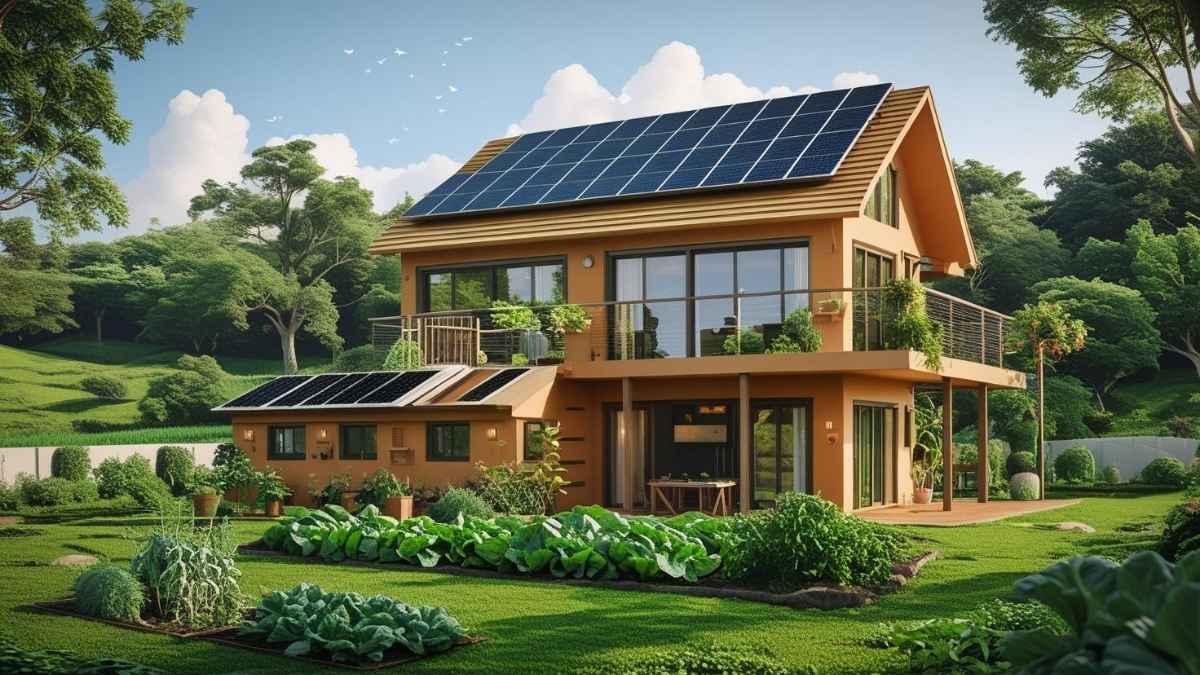Last Updated on June 6, 2025 by Kravelv Spiegel
With rising energy costs, increasing environmental concerns, and the appeal of independence, many people are exploring the idea of a self-sufficient home. Living off-grid or minimizing your reliance on public utilities is not just a lifestyle trend—it’s a smart, sustainable way to live. Whether you’re looking to save money, prepare for emergencies, or reduce your carbon footprint, here’s everything you need to know to get started with a self-sufficient home.
What Is a Self-Sufficient Home?
A self-sufficient home is designed to meet most (if not all) of its own energy, water, food, and waste management needs. This setup minimizes or eliminates reliance on public utilities and systems. Homeowners aim to generate their own power, grow food, manage waste, and collect water, creating a mini-ecosystem that supports their daily needs.
Self-sufficiency doesn’t mean isolation. Many people blend modern comforts with sustainable living, enjoying the benefits of both.
Key Elements of a Self-Sufficient Home
Building a self-sufficient home involves integrating several systems. Here are the core components:
1. Energy Independence
Renewable energy is the backbone of any self-sufficient home. Solar panels, wind turbines, and hydroelectric systems are common solutions for generating power. In regions with inconsistent sun or wind, having a backup generator is crucial.
Home electric generators offer a reliable solution when renewable energy sources fall short, ensuring you’re never without power, even during extended cloudy or windless days.
Battery storage systems are also essential for storing excess power generated during peak production times. Combined with smart energy management, they help you make the most of your energy system.
2. Water Collection and Filtration
Rainwater harvesting is a popular method for self-sufficient homes. Collected rainwater can be filtered and used for drinking, cooking, washing, and irrigation. Greywater recycling systems can also repurpose water from sinks, showers, and laundry for use in toilets or gardens.
Well water is another option, depending on your location. Whichever source you use, water filtration and purification systems are vital to ensure safe, potable water.
3. Waste Management
Managing waste independently includes composting, recycling, and using eco-friendly waste disposal systems. Composting toilets, for example, are a great alternative to traditional plumbing and help convert waste into useful compost for gardens.
Reducing waste through mindful consumption, reuse, and sustainable practices is a major part of maintaining a self-sufficient lifestyle.
4. Food Production
A large garden, greenhouse, or even a small indoor hydroponic system can provide a steady supply of vegetables and herbs. Raising chickens for eggs or goats for milk are also common choices for those with enough space.
Preserving food through canning, drying, or fermenting can help extend the harvest and reduce dependence on grocery stores.
Benefits of a Self-Sufficient Home
Living in a self-sufficient home brings numerous advantages:
- Reduced Utility Bills: Generating your own energy and collecting water cuts down on monthly expenses.
- Sustainability: Reduce your carbon footprint by utilizing renewable energy and minimizing waste production.
- Emergency Preparedness: Natural disasters, grid failures, or supply chain issues are less of a concern.
- Healthier Living: Growing your own food means fewer chemicals and more nutritious meals.
Is It Right for You?
Creating a self-sufficient home isn’t an overnight transformation. It requires planning, investment, and often a lifestyle change. However, even small steps, like adding solar panels, starting a garden, or using home electric generators, can make a big impact over time.
Whether you’re motivated by environmental concerns, financial savings, or the desire for independence, pursuing a self-sufficient lifestyle is a rewarding journey. With the right tools, mindset, and support, your home can become a model of resilience and sustainability.

